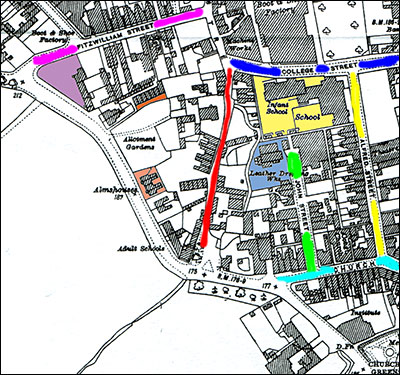Rushden Echo, 26th February 1926, transcribed by Kay Collins
Rushden Rapidly Goes Ahead
More New Shops in High Street
Increased Civic Powers?
The building of business premises in Rushden is proceeding at an unprecedented pace. Following the descent on the town of Messrs Woolworth’s emporium (to which we recently exclusively referred), there are to be coincidental changes which include another firm coming to Rushden. Side by side with the new Woolworth building will be new premises which will transform the unsightly boarded-in hollow which has long faced up Queen-street. Thus High-street is looking to its laurels against the rival claims of Rectory-road, mentioned in this paper not long ago.
The new branch premises will be those of the Sketchley Dye Works, and, on the same plot of ground, will be a new shop owned by the Maypole Dairy Co., whose present building at the bottom of Orchard-place, like that of Messrs Hooton, has to be vacated because of expiry of the lease.
Rushden is now, more definitely than ever, progressing faster that its larger neighbour, Wellingborough. Messrs Hooton are hoping to be in full swing with the business in their new and much larger shop next to the Post Office in a week or two, and at the height of the summer (according to chronology and not climatic vagaries!) the Woolworth emporium is expected to be in full working order, attracting residents of Wellingborough and surrounding towns and villages to Rushden. Messrs Yarde & Co, the Northampton seed merchants, already have a flourishing branch in this vicinity.
If the enterprise of big business firms is an officially-acknowledged criterion of development of the body corporate, the long-cherished dream of Mr John Spencer, J.P., for a full Petty Sessional Court at Rushden, and other facilities for the followers and breakers of the law, should soon be conceded by the powers to whom such ordinances are possible.
|
